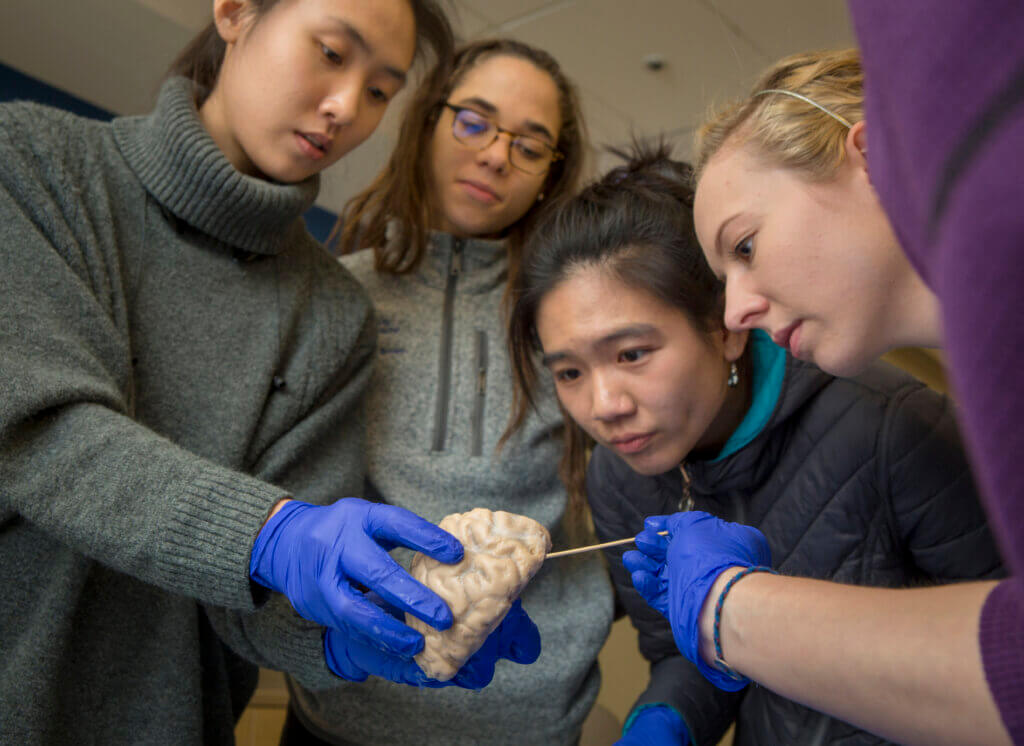Researchers at Duke University have discovered that a single neuron conveys visual information about two separate objects in sight by altering signals from one to the other. If they overlap, though, the brain registers the two as a single thing.
This research is real progress in understanding how the brain processes visual information. Most studies test the brain’s perception of a single image.
According to Jennifer Groh, Ph.D., a faculty member of the Duke Institute for Brain Sciences, that means that we’re not very far along in understanding how the brain encodes more than one thing at a time. Her lab was the first to show that a single auditory brain cell can relay signals about two different sounds by multiplexing.
“Multiplexing is an idea that comes from engineering,” Groh said. “When you have one wire and a lot of signals, you can swap the signals out, kind of like a telephone party line.” The technology rapidly switches back-and-forth, transmitting information from one phone call to the other on one wire. In the brain, however, the switching is probably slower, Groh said, in a news release.
Na Young Jun, a graduate student at Duke, found that a subset of cells in the visual cortex, switch between reporting on two different images across trials.
“Say you have a visual cortex neuron,” Jun said. “When it just sees a backpack, it fires 20 times a second. When it just sees a coffee cup, it fires five times a second. But when that same neuron sees the backpack and the coffee cup next to each other, it alternates firing 20 times a second and five times a second.”
If two objects overlap, however, like placing a coffee cup in front of a backpack, the brain cells fire the same way each time the eclipsing objects are presented. This suggests that the neurons treated overlapping images as a single object. This work starts to move sensory research to better reflect everyday perception for the brain.
“Considering how the brain preserves information about two visual stimuli presented is still a far cry from understanding how the myriad details present in a natural scene are encoded,” Jun and her co-authors write in their report. “More studies are still needed to shed light on how our brains operate outside the rarefied environment of the laboratory.”
The research is published in the journal eLife.












